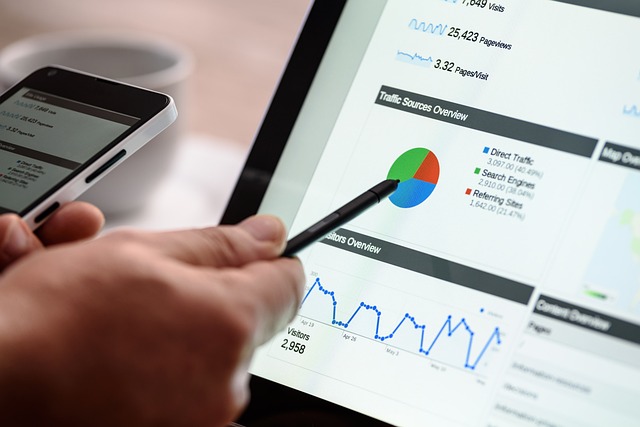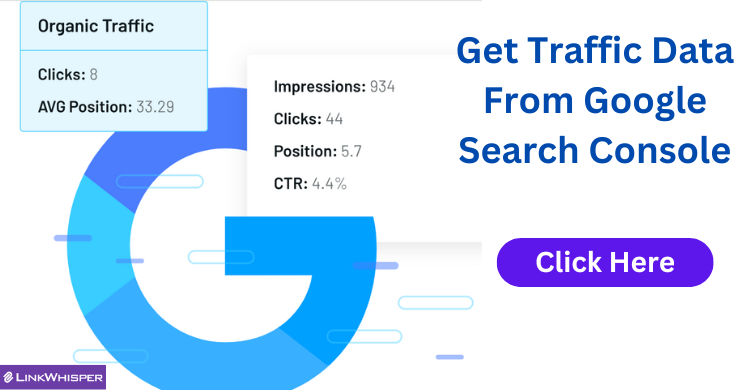What is a lead?
A lead refers to any individual who expresses interest in a product or service offered by a company using any means.
Instead of receiving a random cold call from someone who obtained their contact information, leads typically receive contact from a business or organization after initiating communication by providing their personal information for an offer, trial, or subscription.
Suppose you participate in an online survey to gain knowledge about car maintenance. After a day or two, the auto company that conducted the survey sends you an email offering their assistance in taking care of your car. It is less disruptive than getting a random call from them without knowing your interest in car maintenance, isn’t it? This is the experience of being a lead.
Taking a business viewpoint, the auto company utilizes the data gathered from your survey replies to tailor their initial communication, aiming to tackle your current issues – and avoid reaching out to potential clients who do not show any interest in automobile services.
Leads are included in the extensive process that customers undergo while progressing from visitors to purchasers. The qualifications and lifecycle stage of leads vary, resulting in different kinds of leads.
Marketing Qualified Lead (MQL)
Contacts who have interacted with your marketing team’s initiatives but aren’t prepared to receive a sales call are referred to as marketing-qualified leads. An instance of an MQL could be a contact who completes a landing page form to receive an offer.
Sales Qualified Lead (SQL)
Contacts who have indicated their interest in becoming paying customers are referred to as sales-qualified leads. One instance of such an SQL is a contact who requests information about your product or service by completing a form.
Product Qualified Lead (PQL)
Contacts that have shown interest in becoming paying customers are referred to as product-qualified leads. These leads are most commonly found among companies that offer a product trial or a free or limited version of their product where an upgrade is available. Subsequently, your sales team will take charge of the process.
A customer who utilizes your no-cost version but expresses interest in features that are exclusively accessible through payment is a PQL illustration.
Service Qualified Lead
Customers who have expressed their desire to become paying clients to your service staff are referred to as service-qualified leads. One illustration of a service-qualified lead is a customer who informs their customer service agent of their intention to upgrade their product subscription, at which time the agent will escalate the customer to the appropriate sales team or representative.
Lead Generation Process
After comprehending the role of lead generation in the inbound marketing methodology, we shall go through the procedures of the lead generation process.
- First, a visitor discovers your business through one of your marketing channels, such as your website, blog, or social media page.
- That visitor then clicks on your call-to-action (CTA) — an image, button, or message that encourages website visitors to take some sort of action.
- That CTA takes your visitor to a landing page, which is a web page that is designed to capture lead information in exchange for an offer. An offer is a content or something of value that’s being “offered” on the landing page. This can be an ebook, a course, or a template.
- Once on the landing page, your visitor fills out a form in exchange for the offer.
Can you observe how every piece fits in its place?
In summary, when a visitor clicks on a CTA, they are directed to a landing page where they complete a form in exchange for an offer, thus transforming into a lead.
Make sure to take a look at our costless lead generation tool. It simplifies building lead capture forms on your site and requires minimal effort to configure.
Why is lead generation important?
The era of buying cold call lists is over with the advent of modern lead generation techniques. Companies can gather data on potential buyers and customize their marketing approaches and sales presentations to meet their needs. Lead generation provides the advantages listed below:
Sales lead generation aims to identify potential customers who have shown an interest in the company’s offerings and have the potential to become its audience. As a result, the company can concentrate its marketing and sales endeavors on prospects that are more likely to convert into sales.
Generating sales leads can boost brand awareness. When leads show interest in your brand, you can use this opportunity to educate them about your brand’s values, products, services, features, and benefits, which can help increase their awareness of your brand.
Sales lead generation provides an exceptional chance to compile data on potential customers. This data may include how they stumbled upon your business, your goods and services, which marketing methods have yielded the most leads, the type of communication that resonates with the lead, and their preferences and requirements. Accessing this significant amount of data would assist you in strengthening your marketing and communication strategies, as well as tailoring your products and services to fulfill the needs of your clients.
By creating and fostering leads, businesses can establish sizable groups of individuals with similar interests in their products and services, thereby promoting brand loyalty over an extended period.
Digital channels are primarily utilized to apply inbound, outbound, and sales marketing alignment strategies that are highly effective.
What is inbound marketing?
Generating interest in your company through content creation and promotion is a lead-generation strategy referred to as inbound marketing.
- Content Creation is a marketing strategy that involves creating relevant content to draw in leads looking to address a specific issue. This can be achieved with blogs, videos, eBooks, infographics, and other publications.
- Content Promotion is how that content is made visible to potential customers using search engine optimization (SEO), pay-per-click (PPC) advertising, and social media, among other techniques.
What is outbound marketing?
When used in conjunction with inbound marketing, outbound marketing can effectively target specific prospects and actively pursue leads. Outbound marketing techniques such as emails, events, and advertisements are common examples.
- Email Marketing can be used to distribute new content, send out event invitations, share news, and stay in touch with customers.
- Event Marketing creates an opportunity to share your brand, build personal relationships with customers, and engage with attendees.
- Display Ads can be targeted to specific prospects with certain habits or demographic traits.
- Content Syndication is the practice of sharing your content on third-party websites to draw additional attention to your brand.
Sales and marketing alignment
A successful lead generation strategy heavily relies on sales alignment. The sales team can take charge of lead generation by using social selling, outbound emailing, and networking techniques.
Before sending leads to the sales team, customer relationship management (CRM) software can be utilized to monitor and assess them.
Lead generation in the digital age
With the rise of the internet, how customers traverse the purchasing process has undergone a significant transformation. Rather than first contacting a sales representative, potential buyers now can gather plentiful information on products through a variety of online sources, such as search engines, blogs, social media, and other channels.
Although it’s beneficial for potential customers to be well-informed about the goods and services they desire, it poses a difficulty in establishing brand recognition for businesses. To overcome this obstacle, corporations must implement effective inbound marketing techniques such as search engine optimization and content marketing to establish a robust online presence.
With the advent of the digital era, companies are now able to conduct thorough research and gain a better understanding of their potential leads. By pinpointing the desires and requirements of their intended customer base, businesses can customize information to appeal to them and evaluate possible leads based on their engagement levels and demographic data. Establishing and maintaining relationships with prospective leads is becoming more essential for companies. Therefore, what constitutes a lead and how can they be developed?
What is a lead?
What is a “qualified” lead?
Types of qualified leads
An MQL, or marketing qualified lead, refers to a potential customer or company that has interacted with your marketing team’s outreach activities. However, they may not be prepared for sales interaction just yet. These leads have expressed some level of interest in your offerings, making them good candidates for further nurturing. As they progress in the sales journey, typically through nurturing efforts, they can eventually be handed over to sales. It’s possible to track and assess leads before transferring them to sales using CRM software.
A sales-qualified lead (SQL) pertains to an individual or entity who has stated their intent to become a paying customer. At this stage, the sales team continues to foster the relationship established by marketing. Due to these leads already being qualified, there is a higher probability of them converting into sales, thus accelerating the latter part of the sales cycle. A better synergy between marketing and sales can lead to more efficient lead generation and improved conversion rates.
A product-qualified lead refers to an individual or entity that has previously utilized your offerings and has now indicated a desire to become a customer by making a purchase. Typically, product-qualified leads are prevalent among businesses that provide free trials or samples of their goods or services. These leads are advantageous because they have already had first-hand experience with your offering, making them more likely to convert.
A lead that is service-qualified refers to an individual or entity that expresses their interest in purchasing your product or service to your sales or customer service team. This type of lead is considered the most qualified since they approach you with an offer to purchase what you are selling. Additionally, a service-qualified lead could also pertain to a current customer who is seeking to upgrade to a premium edition of your product or service.
After generating a lead, it is necessary to qualify them, which involves gathering information about them. An individual provides their contact information while visiting your website to receive product and service updates, thereby becoming a qualified lead. Emphasizing qualified leads enhances the sales conversion rate and boosts your return on investment.
Why not just buy leads?
Both marketers and salespeople aim to populate their sales funnel as fast as possible, resulting in the allure of purchasing leads.
To begin with, the leads you have bought are not familiar to you. Generally, they have provided their details at some other website while enrolling for a service or activity, and have not given their consent to receive any communication from your organization.
Sending them messages that they did not ask for is considered unwanted and intrusive. It can be compared to receiving a disruptive phone call while trying to eat spaghetti – it leaves people feeling bothered and annoyed.
Simply put, if someone has never visited your website and displayed curiosity about your products or services, then approaching them would be an interruption.
There is a high probability that if individuals did not choose to receive messages exclusively from you, they may mark your messages as spam.
When a substantial number of individuals report your messages as spam, you are placed on a “blacklist” that is circulated among various email service providers. Once your name is on the blacklist, it is an arduous task to have it removed, and your email deliverability and IP reputation are likely to be negatively impacted.







